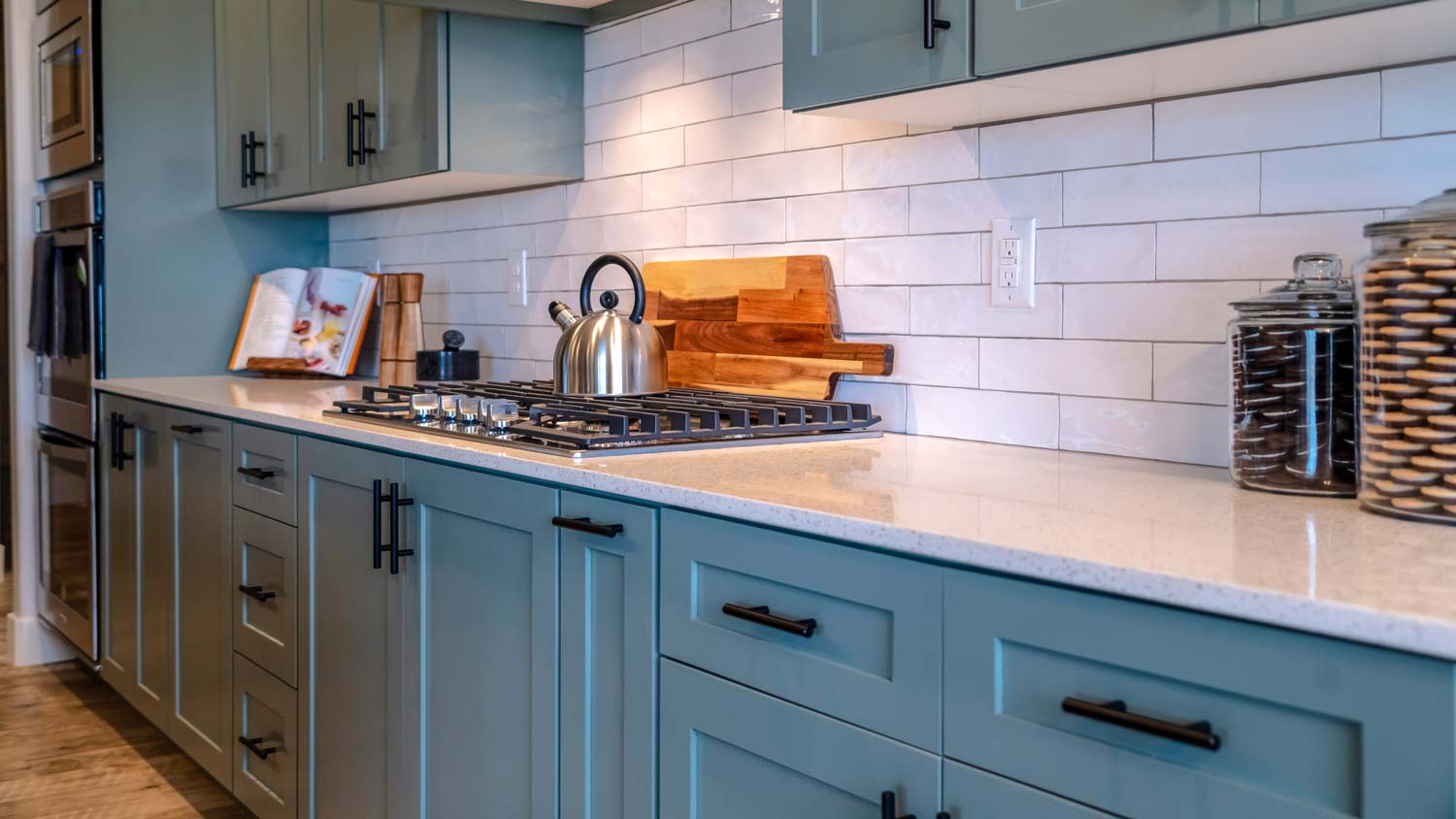
Discover the cost to stain cabinets, including average prices, key cost factors, and tips to help you budget and save on your cabinet staining project.
Don’t let old wood stains leave a permanent mark—here’s how to start fresh


Despite its name, cabinet stains don't have to be permanent. By learning how to stain cabinets that are already stained, you can achieve a freshly-stained look for cabinets that are looking worse for the wear or need a new color. Here’s how to stain cabinets that are already stained.
Consider applying water-based stain to your cabinets, as it is easier to apply and dries significantly faster than its oil-based counterparts. This time-saving stain option is also less prone to streaks or imperfections in the finish.
To begin the cabinet refinishing process, use a screwdriver to carefully remove all the cabinet hardware, which includes handles, knobs, and hinges. Removing the door will also make it much easier to sand and apply the new stain.
Next, take preventative measures to safeguard the surrounding areas from any potential mess. Cover any nearby surfaces with drop cloths or a tarp to shield them from dust, splatters, and drips that can occur during the refinishing. Don protective goggles and latex or rubber gloves to protect your hands.
If you're wondering how to remove stain from wood, chemical strippers are a good option, but they’re not always necessary. For example, when transitioning from a darker stain to a lighter one or removing lacquers, you’ll need to use a chemical stripper. If you're going from a light to a dark color, no stripping is necessary. However, be aware that it could affect the color of the new stain.
Ensure you're in a well-ventilated area and wear protective gear, including gloves and safety glasses. Apply the chemical stripper generously to the stained area using a steel wool pad. Allow it to sit for the recommended duration, usually 15 to 30 minutes, to let it penetrate and loosen the old stain. Afterward, use a paint scraper or putty knife to gently scrape off the softened stain. Wipe the surface with a clean cloth to remove any residue.

Next, sand the cabinet using 150 to 220 grit sandpaper. Sand with the grain of the wood, taking care not to gouge the surface, and try to be as consistent as possible throughout. Once you're finished sanding, go over the cabinet’s surface with a tack cloth or microfiber cloth to remove any lingering dust particles.
Apply a generous coat of the new stain to the wood using a cloth or a foam brush. Paintbrushes are an option, but these can leave a streaky finish from the brush strokes. Apply the material in smooth, even strokes.
With your cloth or stain pad, wipe away any excess stain. Do not use paper towels, as these can remove too much stain and leave fine paper particles stuck to the wood.
Per the manufacturer’s instructions, allow the stain to cure for the specified amount of time needed. This timeframe is typically between 18 to 24 hours.

If you want to make your cabinets a darker color, apply an additional coat of stain, wipe it away, and allow it to fully cure. Be sure the first coat is dry before adding another coat.
Learning how to stain cabinets that are already stained may seem like a relatively easy DIY in theory, but in practice, it can be challenging. If you have a lot of wood to re-stain, varnishes to remove, or detailed wood carvings to preserve, it might be best to hire a local cabinet refinisher for the job. The average cost to refinish cabinets ranges anywhere from $1,800 to $5,000, while a basic DIY will usually be under $500.
From average costs to expert advice, get all the answers you need to get your job done.

Discover the cost to stain cabinets, including average prices, key cost factors, and tips to help you budget and save on your cabinet staining project.

Discover the cost of resurfacing kitchen cabinets, including average prices, key cost factors, and tips to help you budget and save on your next kitchen update.

Are you ready to give your kitchen a makeover? Learn how to refinish cabinets to a look you love with these top methods.

Discover the cost of glazing cabinets, including average prices, key cost factors, and tips to save on your cabinet glazing project.

We share the pros and cons of refacing kitchen cabinets so you can make the most of your remodeling budget. We also reveal a few alternatives to refacing.

Learning about problems with refacing kitchen cabinets can help you avoid common errors before and during your kitchen upgrading project.